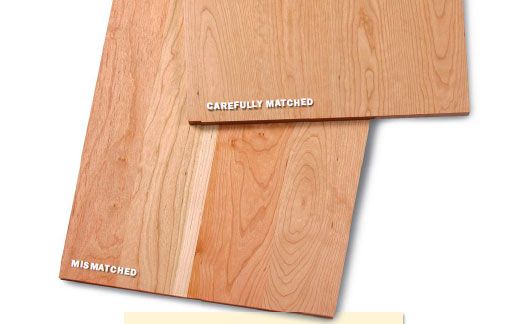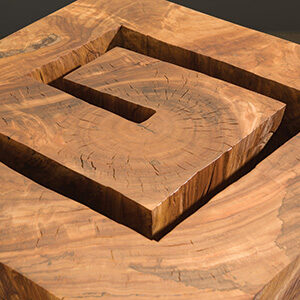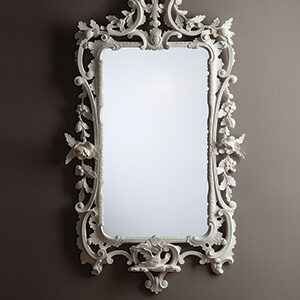The Hodge-Podge Desk: Picking the right grain can make or break a design

Grain selection can make or break your design. Learn about one reader's hodge-podge desk below. Or, if you're in Kansas this weekend, stop by Roland Johnson's "Design to Finish" seminar at The Woodworking Show in Overland Park. (Photo from Bob Van Dyke's article on creating an attractive tabletop.)
The middle-aged gent approached my workbench after the seminar and in an icily sarcastic voice said “Thanks a lot”.
Somewhat taken aback I replied “You’re welcome, I guess”.
He quickly reversed his tone and said, “No, I’m sorry, I didn’t mean to sound cross, but now I have to go home and start over on the small desk I was nearly done building. You see, I was very picky about the design and I consider myself to be a good craftsman, but I’m one of those folks that you referred to as “the next board” woodworkers. I’ve never spent a lot of time analyzing my choice of boards other than the obvious dark and light mismatch. Now, every time I’ll look at that thing I’ll see all the mismatches, and I won’t want that desk around”.
I apologized for causing him any inconvenience and his reply was that he’s happy that he will be able to make furniture that will be better looking and that he enjoyed building the desk the first time and that the second desk will be easier and even more fun. He said he would finish the “hodge-podge” desk and give it to a relative he seldom sees and doesn’t particularly care for.
Picking the right grain patterns, grain orientation, and color is as critical to good design as proper proportions and visual balance. In fact grain patterns can aid visual balance and can be used to highlight or enhance your work. My seminars Design to Finish teach how to quickly and accurately pick lumber that will make your project a success. I’ll be presenting Design to Finish at The Woodworking Show in Overland Park, Kansas this weekend.
Have you got an interesting story about a woodworking epiphany that changed the way you build furniture? I’d like to hear it.























Log in or create an account to post a comment.
Sign up Log in